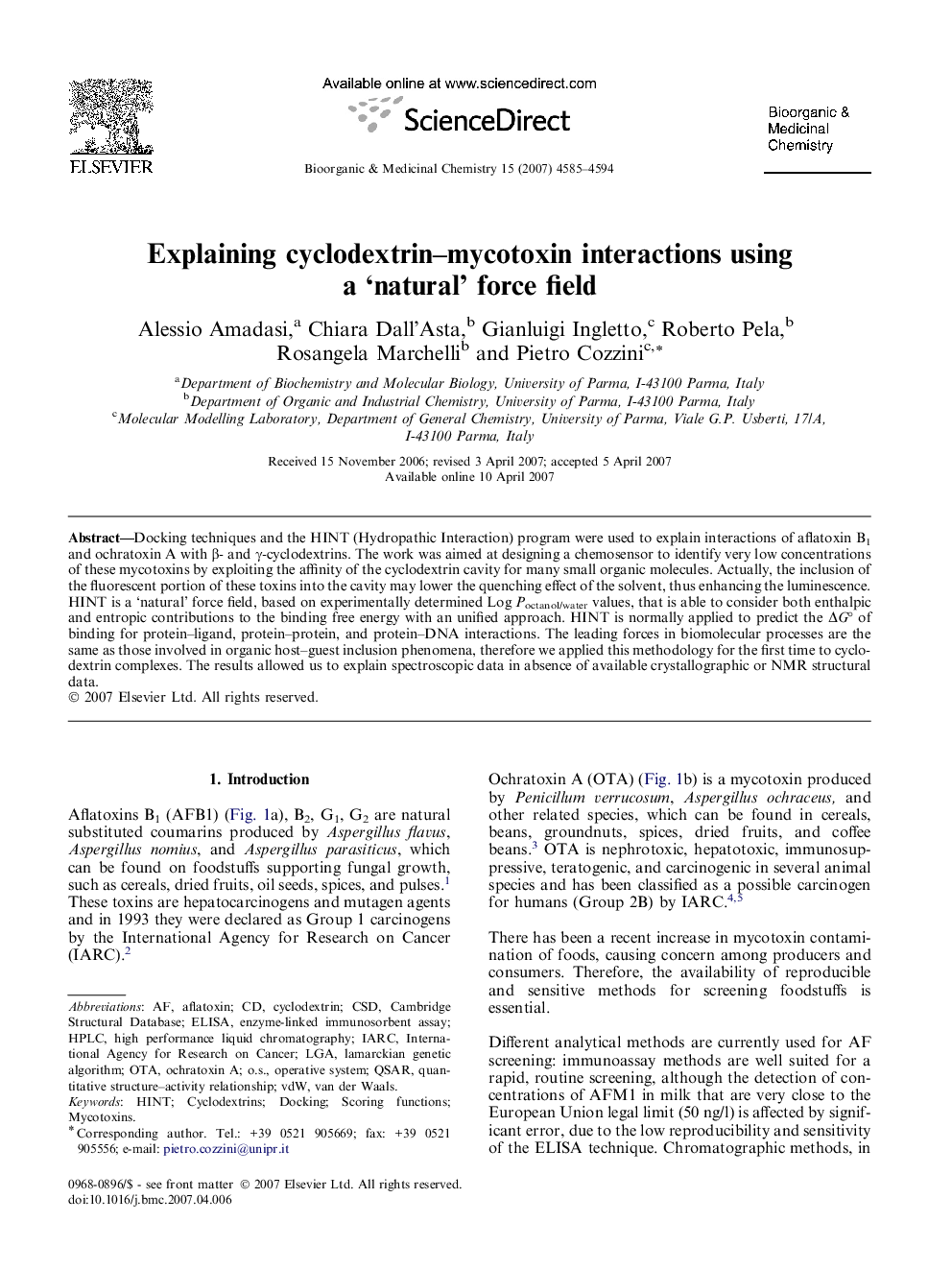| کد مقاله | کد نشریه | سال انتشار | مقاله انگلیسی | نسخه تمام متن |
|---|---|---|---|---|
| 1362846 | 981497 | 2007 | 10 صفحه PDF | دانلود رایگان |

Docking techniques and the HINT (Hydropathic Interaction) program were used to explain interactions of aflatoxin B1 and ochratoxin A with β- and γ-cyclodextrins. The work was aimed at designing a chemosensor to identify very low concentrations of these mycotoxins by exploiting the affinity of the cyclodextrin cavity for many small organic molecules. Actually, the inclusion of the fluorescent portion of these toxins into the cavity may lower the quenching effect of the solvent, thus enhancing the luminescence. HINT is a ‘natural’ force field, based on experimentally determined Log Poctanol/water values, that is able to consider both enthalpic and entropic contributions to the binding free energy with an unified approach. HINT is normally applied to predict the ΔG° of binding for protein–ligand, protein–protein, and protein–DNA interactions. The leading forces in biomolecular processes are the same as those involved in organic host–guest inclusion phenomena, therefore we applied this methodology for the first time to cyclodextrin complexes. The results allowed us to explain spectroscopic data in absence of available crystallographic or NMR structural data.
Predicted inclusion mechanism of ochratoxin A into β-cyclodextrin. The Connolly surface of the host (cyclodextrin), built using Sybyl MOLCAD tools, is coloured blue, while the guest molecule (ochratoxin A) is rendered in capped sticks.Figure optionsDownload as PowerPoint slide
Journal: Bioorganic & Medicinal Chemistry - Volume 15, Issue 13, 1 July 2007, Pages 4585–4594